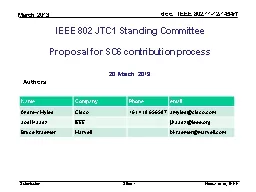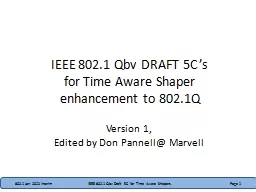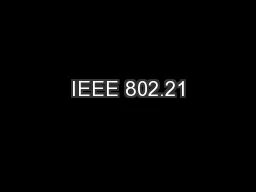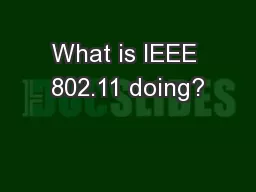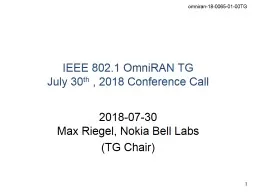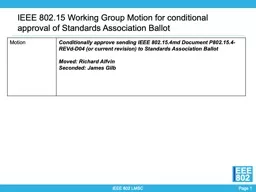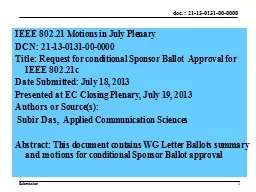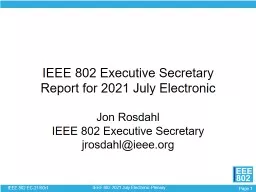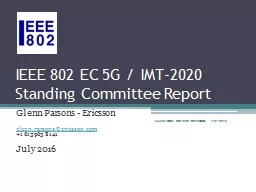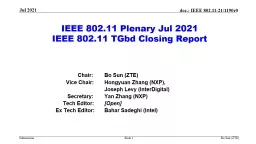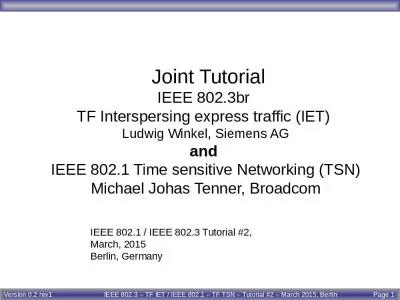PPT-Joint Tutorial IEEE 802.3br
Author : calandra-battersby | Published Date : 2018-10-14
TF Interspersing express traffic IET Ludwig Winkel Siemens AG and IEEE 8021 Time sensitive Networking TSN Michael Johas Tenner Broadcom IEEE 8021 IEEE 8023
Presentation Embed Code
Download Presentation
Download Presentation The PPT/PDF document "Joint Tutorial IEEE 802.3br" is the property of its rightful owner. Permission is granted to download and print the materials on this website for personal, non-commercial use only, and to display it on your personal computer provided you do not modify the materials and that you retain all copyright notices contained in the materials. By downloading content from our website, you accept the terms of this agreement.
Joint Tutorial IEEE 802.3br: Transcript
Download Rules Of Document
"Joint Tutorial IEEE 802.3br"The content belongs to its owner. You may download and print it for personal use, without modification, and keep all copyright notices. By downloading, you agree to these terms.
Related Documents


